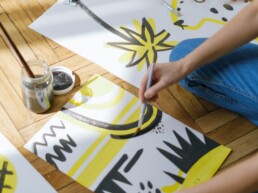Content Before Design: Delivering a Better User Experience
There’s no doubt that design is a huge factor for web design to engage users – but for many projects, it is the only aspect that is really given any weight with all other elements expected to simply ‘fall into place. This is where the web design can go very wrong. Other aspects to consider include content copy design.
The myth that design should be the driver of a project has launched countless sites that don’t truly respect or understand the user. Very often, when kicking off a project, both client and designers cut right to the chase creating wireframes and comps with placeholder text which can, and usually delivers a design that is well received, but not based in reality. As a result, text and contextual imagery are shoved into places that weren’t built to hold them. Your classic square peg round hole – not ideal for the optimal user experience.
When all the elements are pared down – the audience is coming to the site for a reason. Rarely, and particularly on the consumer side, do we hear ‘you have to see this website’s design. The more common situation is, ‘company A has a really great service or product, check out their site’. If the user arrives at the site and the design is great but the content does not reflect their brand or product – the brand itself and its digital representation, have failed.
Content serves as the most important element to drive conversion and encourage brand trust. A site that can extend this confidence to its users will benefit from community building and social proof. Usability testing has shown that an interface with a simplistic structure with high-quality, targeted content copy design performs better than its counterpart with a more showy layout and lesser-quality content.
Beginning with a creative session – content, design, and brand should all be taken into consideration. Determining the goals of the site for the organization it will be representing is key to developing a navigation structure and site architecture. Once this framework is built out, the content copy design tends to come together more naturally and authentically. Many find that what once seemed like a daunting task is now an exercise that leads to a better understanding of the brand at hand.
With a clear view of the site messaging and goals, designers can more seamlessly deliver a design that is truly reflective of the organization. The harmony of content copy design and visual design is an essential step in the ultimate goal of achieving a UX that delivers useful and intuitive pathways.
Revolutionizing UX Design with the Binary Approach to Project Management
Embracing a clear approach to task completion—where tasks are strictly marked as 'done' or 'not done'—can significantly enhance the efficiency, clarity, and accountability of UX projects. This project management method offers a straightforward…
Human-Centered Design: The Heart of Creating Impactful Digital and Physical Experiences
Whether it be digital, physical, or conceptual, one philosophy consistently emerges as the cornerstone of impactful and effective creation: Human-Centered Design (HCD). At its core, Human-centered design isn’t just a methodology; it’s a…
The Conundrum of Empathy in UX Design: A Driving Force or an Unrealistic Ideal?
Empathy is often touted as the backbone of user experience (UX) design, a tool to perceive and feel what end users might experience. However, the practicality and efficacy of empathy in UX design is a subject of intense debate. While empathy can be…



